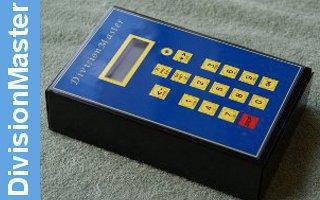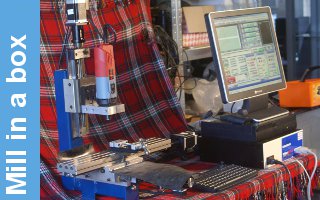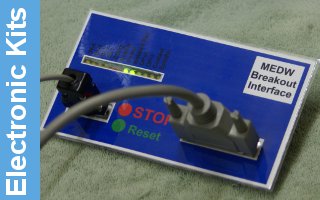HRP Canopy
CANOPY AND SHOWMAN'S FITTINGS
The Fowler Showman's engine canopy is constructed of wooden formers at the front and the rear, and also at the points at which the canopy supports are attached. The remainder of the formers are of metal angle, which is formed round to follow the curves at the side of the canopy. The wood for a model canopy can often be bought from a model suppliers, since miniature sized planks are used in model ship building; the wood of which they are made is chosen for its resistance to splitting, and is often obechi. After a Showman's canopy has been made, it will need to be covered in white canvas. This was applied on the real engines to make the canopy completely waterproof (obviously not so important on a model). The method of fitting is as follows:-Take a piece of linen sheeting or an old pillow case (when nobody is looking!!) and cut this approximately to the size required. Next, varnish the top of the canopy with a quick drying varnish, after which stretch the linen over it and press it well down on the wet varnish so that penetration will occur. Smooth the linen down so that there are no wrinkles and trim off any surplus around the edges, making sure that it is well pressed down; allow the varnish to dry, and then a coat of flat white paint can be applied. A second coat of paint is desirable, after which the thin metal retaining strips can be screwed on over the canvas, using miniature screws just long enough to go into the planks of the canopy.
OLIVERS. On a real engine, the 'Olivers' or twisted brasses were made in a tubular section, often stamped up in two halves, and then silver soldered together at the join. The canopy supports themselves were steel and the 'Olivers' were fitted over them. However, on a model this method is not really practical, so it is usual practice to make the twisted brasses solid and to fit steel studs in each end of them, the studs passing through the polished brass balls before being attached to the canopy or the engine itself. The easiest way to make 'Olivers' is to take a suitable grade of square brass and twist it, using a vice and an adjustable spanner. A tube can be used to slip over the square rod in order to keep it straight, although this is not really necessary. Some model suppliers will have the correct grade of brass in stock for this purpose. It will be an easily workable type of metal, having certain additions in its formula, which will make it possible to twist up the 'Olivers' completely, at one attempt, without any need whatsoever for annealing. The ornamental brass balls to the canopy can be best produced with a form tool. The ideal way to make the form tool is to produce an accurate card cut-out as a guide, while you are grinding up the tool. To many modellers, a form tool of this type may appear a little involved, so a description is called for:-First you wUl need a piece of tool steel at least as wide as the ball you are intending to produce, and also a suitable grinding wheel. You can commence with a fairly coarse wheel until the tool is something like the required shape, after which obtain a fine wheel about 100 grits per inch and you will be well on the way to success. You will now need to shape up your stone, and this is best carried out with a dressing stick. Dressing sticks are not very commonly known outside the grinding trade, but they are extremely handy for truing wheels up, or for giving a stone a definite shape for grinding form tools. They are generally obtainable in pieces 6" long by 1" square. If you find it hard to obtain them, the best way is to place an order through an engineers supply company, or through a Model Engineer Society. If difficulty is experienced, the names of the grinding wheel manufacturers can be found in classified telephone directories. Making sure that your eyes are well protected with grinding goggles, work the dressing stick gently across the grinding stone until you have achieved the shape required, checking with a suitable template. It is surprising how smoothly a dressing stick cuts the stone, and you should quickly be able to produce the contour required. (In industry, dressing sticks are used for jobs which do not require the accuracy of a diamond, and they are very much less expensive.) Once the stone is formed up, finish-grind your tool, utilising the rest to keep the tool absolutely steady. Any final shaping or blending that the form tool may need can then be carried out, by hand, with a small abrasive stone. The brass balls themselves can be produced very quickly once the form tool is ready. Incidentally this tool should be completely flat-topped or have a very slight negative angle, so that there is no tendency to dig into the work. Centre a suitable piece ,of brass rod, and support it with the tailstock. Then mount up the form tool and bring this into the work, being sure that the tool is on centre height, and commence cutting. Generally brass is machined at high speed; but book rules do not always apply, and often it will be found that a finish achieved at high speed on one lathe or machine cannot be produced at the same speed on another, so you must experiment. Broadly speaking, a big, heavy machine will carry out this forming operation at a high speed satisfactorily, whereas, the lighter machines will probably carry out a forming cut at a slow speed much more easily, when chattering is not so likely to occur. Once you have formed the first ball to the required size and shape, it will only be a matter of moving the saddle along, and advancing the forming tool to a similar position of that of the first ball; it is advisable on this type of job to chalk mark the feed dial for constant size.
DYNAMOS. The Showman's model wifl need a working dynamo. This will quite of ten present a problem, as there does not appear to be any manufactured item which can be utilised for this purpose. One solution, however, is to take a motor car dynamo, obtained from a scrap yard, and to modify it to suit your needs. This will entail using the centre field section; housing this between correct scale end covers and making the necessary brush gear to fit snugly into these covers. The armature spindle may also need modification, but by this method it is possible to produce a dynamo which will work, and which looks correct.
SIMPLICITY ROLLER CANOPY. The Simplicity Roller has a corrugated sheet to its canopy, this may present some difficulty. Probably the best way to produce the corrugations for this will be to take steel rods just longer than the finished sheet itself, and to space these out so that they will rest at the same centres as those of the curves of the corrugated top. After this, use some thickish pieces of steel bar as a backing and secure the forming rods to this backing by welding at the ends, with a couple of screws in the middle. Next make a similar assembly. It will then be possible to use the two as a forming tool, and only necessary to squeeze them together with thin annealed brass sheet between them to produce the required corrugations. The second operation will be to move the sheet on, so that one of the end rods comes in line with the last formed groove, when once again the two form tools will be drawn together. This process will be carried out until the full width of the required sheet is obtained.








